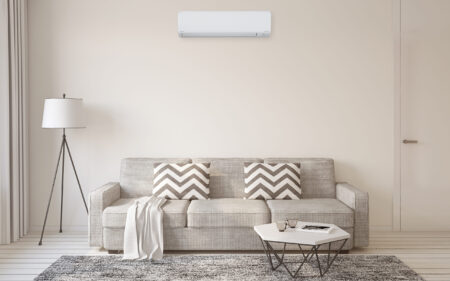
Choosing the right heating and cooling system for your home is a critical decision. Two popular options are ductless mini-split systems and traditional HVAC systems. Each has its advantages and is suitable for different needs. At Mike's Heating and Air, we aim to help you understand the key differences between these systems so you can make an informed decision.
Ductless Mini-Split Systems
Ductless mini-split systems consist of an outdoor unit connected to one or more indoor units by a conduit. They are known for their flexibility and efficiency. Here are some key features:
- Energy Efficiency: Mini-splits are highly energy-efficient because they deliver conditioned air directly into different zones, eliminating the energy losses associated with ductwork in traditional systems.
- Zone Control: Each indoor unit can be controlled independently, allowing you to set different temperatures in different rooms or areas of your home.
- Easy Installation: Mini-splits are easier to install than traditional systems, especially in homes without existing ductwork. Installation typically requires only a small hole in the wall for the conduit.
- Quiet Operation: These systems operate more quietly than traditional HVAC systems, as the noisy compressor is located outside the home.
- Flexibility: They can be used for heating and cooling, making them a versatile choice for year-round comfort.
Traditional HVAC Systems
Traditional HVAC systems, which include central air conditioners and furnaces, use a network of ducts to distribute conditioned air throughout your home. Here are some key features:
- Comprehensive Climate Control: Traditional HVAC systems provide whole-home heating and cooling, maintaining a consistent temperature throughout your home.
- Established Technology: These systems are a long-standing technology with a proven track record of reliability and effectiveness.
- Cost-Effective for Larger Homes: For larger homes, traditional systems can be more cost-effective in terms of installation and operation, especially if ductwork is already in place.
- Indoor Air Quality: With proper filtration and maintenance, traditional systems can effectively improve indoor air quality by filtering out dust, pollen, and other allergens.
- Compatibility with Existing Infrastructure: If your home already has ductwork, upgrading to a newer traditional HVAC system can be straightforward and less disruptive.
Which System is Right for You?
The choice between a ductless mini-split system and a traditional HVAC system depends on several factors, including your home’s size, existing infrastructure, budget, and specific heating and cooling needs.
- Smaller Homes or Additions: For smaller homes, additions, or rooms without ductwork, a mini-split system offers a flexible, efficient solution.
- Larger Homes: For larger homes with existing ductwork, a traditional HVAC system may be more cost-effective and provide comprehensive climate control.
Both ductless mini-split systems and traditional HVAC systems have their unique advantages. At Mike's Heating and Air, we can help you evaluate your specific needs and recommend the best solution for your home. Contact us today to learn more about our heating and cooling options and schedule a consultation or installation service!














